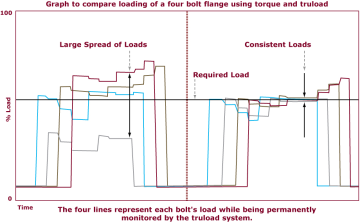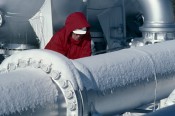The truth about industrial fastenings
No two joints are precisely the same. For example, two apparently identical bolts, tightened with equal torque, can produce vastly differing loads. This is largely due to variable friction resulting from slight differences in:
- lubrication
- washer specification
- thread quality
- material selection
- cleanliness
- service history
If a bolt is incorrectly loaded it can come loose or fracture. Either scenario could have significant consequences.
A comprehensive maintenance programme goes some way towards ensuring that a load-bearing fastening will retain its integrity. However, this is not sufficient to eliminate unplanned downtime or lost revenue due to fastener failure. Moreover, there are safety concerns and environmental impact to be considered.
Can maintenance and service be improved, removing the uncertainty from traditional fastener systems by ensuring that every bolt is tightened precisely and offering advance warning of potential problems?
We've developed a way to do these things. It is called truload.

This left section of the graph clearly shows the varying loads induced into the four bolts tightened using a pre-set torque. Even after re-tightening, the spread of values represents 75% of the expected load figure.
The right hand side of the graph shows the same bolts tightened using truload. After the second tightening the variance in load induced was less than 3%.




